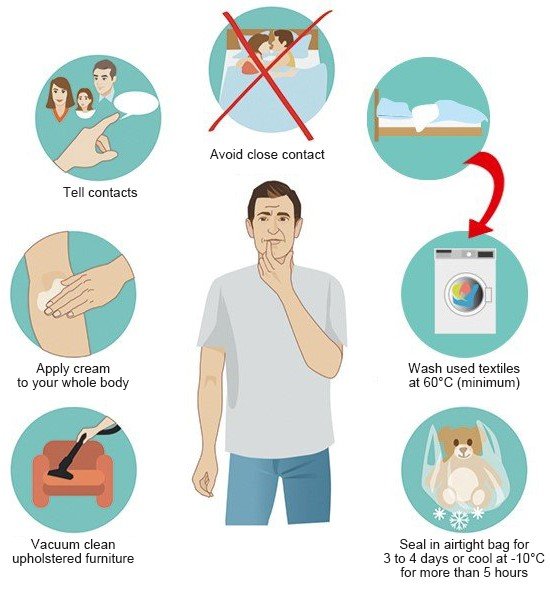How do you treat scabies on your skin?
Dealing with scabies, a highly contagious skin condition caused by the Sarcoptes scabiei mite, can be uncomfortable and distressing. Scabies typically presents with intense itching and a characteristic rash, often affecting areas such as the hands, wrists, elbows, armpits, and genital region. Effective treatment involves addressing both the mites on the skin and preventing reinfestation. Scabper Lotion is used to treat scabies, a condition where tiny insects infest and irritate your skin. Here’s a comprehensive guide on how to treat scabies on your skin:
Understanding Scabies:
Scabies is caused by the Sarcoptes scabiei mite, which burrows into the outer layer of the skin (epidermis) where it lays eggs. This burrowing and the body’s allergic response to the mites and their eggs lead to the characteristic symptoms of scabies:
- Intense itching: Particularly worse at night or after a hot shower. Permethrin Lotion is an antiparasitic medication.
- Pimple-like rash: Often accompanied by small, raised bumps, blisters, or tiny burrow lines on the skin.
- Sores: Resulting from scratching, which can lead to secondary bacterial infections if not properly managed.
Scabies spreads through prolonged skin-to-skin contact with an infected person. It can also spread through infested clothing, bedding, or furniture, although this is less common.
Treatment Options for Scabies:
Treating scabies involves eliminating the mites from the skin and preventing their spread to others. The mainstay of treatment includes both topical medications to kill the mites and oral medications in some cases. Here are the steps and options available for treating scabies effectively:
-
Topical Medications (Scabicides):
-
Permethrin Cream: This is the most commonly prescribed treatment for scabies. Permethrin is a synthetic pyrethroid that kills the mites and their eggs.
- Application: Apply the cream to clean, dry skin from the neck down to the toes. Leave it on for the prescribed amount of time (usually 8-14 hours) and then wash it off.
- Repeat Application: A second application of permethrin cream may be recommended 7-10 days later to ensure all mites and eggs are eliminated.
- Safety: Permethrin is generally safe for adults and children. It should not be used in infants younger than 2 months old without medical supervision.
-
Ivermectin: In cases where permethrin is not effective or cannot be used, oral ivermectin may be prescribed.
- Dosage: Typically, a single dose is sufficient, but your healthcare provider will determine the appropriate dosage based on your age, weight, and severity of the infestation.
- Considerations: Ivermectin is generally well-tolerated but may not be suitable for pregnant or breastfeeding women and young children. It should be used with caution in individuals with certain medical conditions.
-
-
Supportive Measures:
- Antihistamines: Over-the-counter antihistamines such as diphenhydramine (Benadryl) can help relieve itching associated with scabies.
- Cool Compresses: Applying cool, damp compresses to affected areas can provide temporary relief from itching.
-
Environmental Measures:
- Wash Clothing and Bedding: To prevent reinfestation, wash all clothing, bedding, and towels in hot water and dry them on the hot cycle. Items that cannot be washed should be sealed in a plastic bag for at least 72 hours to kill any remaining mites.
- Vacuuming: Vacuum carpets, rugs, and upholstered furniture thoroughly. Dispose of the vacuum bag immediately to prevent the mites from spreading.
-
Avoiding Reinfestation:
- Avoid Close Contact: Until treatment is complete and symptoms have resolved, avoid close contact with others to prevent spreading scabies.
- Notify Close Contacts: Inform close contacts (household members, sexual partners, etc.) so they can be treated simultaneously to prevent reinfestation.
-
Follow-Up:
- Monitoring: Monitor your skin for any signs of persistent itching or new burrows after treatment. Follow up with your healthcare provider if symptoms do not improve or worsen.
- Repeat Treatment: In some cases, a second round of treatment may be necessary if symptoms persist or if reinfestation occurs.
Precautions and Considerations:
-
Pregnancy and Breastfeeding: Some scabicides may not be suitable during pregnancy or while breastfeeding. It’s essential to discuss treatment options with your healthcare provider if you are pregnant or breastfeeding.
-
Children: Consult with a pediatrician before using any scabicide on infants and young children, as dosages and treatment options may differ.
-
Secondary Infections: If scratching causes open sores or breaks in the skin, there is a risk of secondary bacterial infections. Keep affected areas clean and consult your healthcare provider if you notice signs of infection (increased redness, swelling, warmth, or pus).
-
Itching: Itching may persist for several weeks after treatment, even if the scabies mites have been eliminated. This is due to residual allergic reactions to the mites and their debris. Antihistamines and topical anti-itch creams can provide relief during this period.
When to Seek Medical Attention:
While scabies can usually be treated effectively with medication and environmental measures, it’s important to seek medical attention if:
- Symptoms Persist: If itching and rash continue or worsen despite treatment.
- Signs of Infection: If you develop signs of a bacterial skin infection, such as increased redness, swelling, warmth, or pus at the affected sites.
- Reinfestation: If you suspect reinfestation due to persistent itching and new burrows appearing on the skin.
Conclusion:
Managing and treating scabies involves eliminating the mites from the skin with scabicidal medications, taking precautions to prevent reinfestation, and addressing symptoms such as itching and potential secondary infections. By following your healthcare provider’s recommendations, practicing good hygiene, and treating close contacts simultaneously, you can effectively manage scabies and minimize its impact on your health and well-being. If you suspect you have scabies or have been in close contact with someone who has scabies, seek medical advice promptly for proper diagnosis and treatment.






